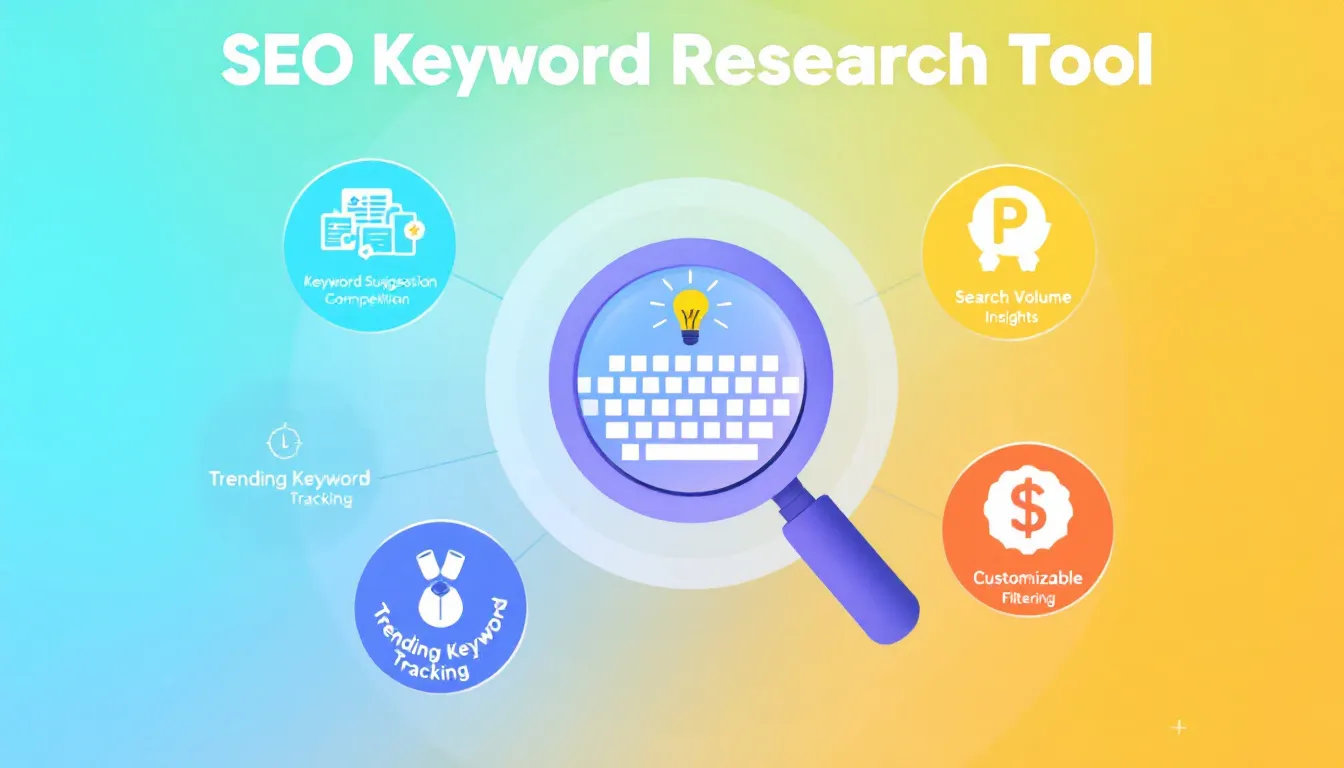SEO Keyword Research Tool
Is this tool helpful?
How to Use the SEO Keyword Research Tool Effectively
Follow these steps to get accurate and useful keyword ideas for your content strategy:
- Enter the main topic: Type the central theme you want to explore. For example, “Electric Bicycles” or “Remote Work Tools”.
- Specify the target language and region: Input the language and market location for your audience, such as “French FR” or “Japanese JP”.
- Add an industry or niche (optional): Provide a narrower category to refine results, like “Urban Transportation” or “Productivity Software”.
- Exclude keywords (optional): List keywords you want to avoid, separated by commas. For instance, “second-hand, used” or “free, trial”.
- Click “Generate SEO Keywords”: Submit the form to start collecting relevant keywords.
- Review your keyword results: You’ll receive a detailed list including search volume, competition difficulty, and user intent insights.
- Copy the results: Use the “Copy to Clipboard” option to save and analyze the data offline or incorporate it into your SEO plan.
Introduction to the SEO Keyword Research Tool
This SEO Keyword Research Tool helps you uncover high-volume search terms and gain valuable insights about your chosen topic. It goes beyond simple keyword lists by providing data-driven analysis tailored to your specific language, region, and niche preferences.
Using this tool, you’ll identify keywords with strong potential for attracting organic traffic, understand searcher intent, and spot emerging trends that keep your content fresh and relevant. With these insights, you can optimize your content strategy and improve your chances of ranking well in search engine results pages (SERPs).
What the Tool Offers
- Top high-volume keywords aligned with your primary topic.
- Trending subtopics relevant to your industry or niche.
- Keyword difficulty scores indicating competition level.
- Clear categorization of user intent (informational, transactional, navigational).
- Targeted results based on your selected language and geographic region.
Practical Uses of the SEO Keyword Research Tool
Here are some real-world ways you can apply the tool’s insights to improve your SEO and content planning:
1. Enhancing Blog Content
- Main topic: “Mindfulness Meditation”
- Language/Region: English UK
- Industry/Niche: Mental Health
Discover long-tail keywords like “mindfulness meditation techniques for anxiety” or “guided meditation scripts for beginners.” Use these to create targeted articles that address specific user questions and needs.
2. Optimizing Local Business SEO
- Main topic: “Coffee Shops”
- Language/Region: Spanish ES
- Excluded Keywords: franchise, chain
Find relevant keywords such as “best local coffee shops in Madrid” or “artisan coffee near Plaza Mayor.” Use these to craft localized landing pages and improve your search visibility within your region.
3. Supporting E-commerce Marketing
- Main topic: “Wireless Headphones”
- Language/Region: German DE
- Industry/Niche: Consumer Electronics
Identify keywords like “best wireless headphones for running” or “noise-cancelling Bluetooth headsets.” Incorporate these into product descriptions, FAQs, and blog posts to attract and convert shoppers effectively.
Key Benefits of Using This Keyword Research Tool
- Save time: Automatically generate comprehensive keyword data instead of manual searches.
- Prioritize effectively: Use search volume and keyword difficulty to focus on terms that balance opportunity and competition.
- Enhance content relevance: Match your content to actual user search intent to improve engagement.
- Spot emerging trends: Stay ahead by targeting growing search phrases and topics.
- Localize SEO efforts: Tailor keywords to specific regions and languages for targeted marketing.
Overcoming Common SEO Challenges
1. Expanding Beyond Basic Keywords
Avoid limiting your content to obvious, highly competitive keywords. This tool uncovers niche keywords and related subtopics to diversify your SEO portfolio.
2. Balancing Keyword Volume and Competition
Access detailed keyword difficulty scores alongside search volumes to find “sweet spot” keywords you can realistically rank for while attracting significant traffic.
3. Understanding What Users Really Want
Classify keywords by user intent—whether they’re looking for information, intending to buy, or navigating to a specific site—so your content addresses their real motivations.
4. Keeping Up with Industry Trends
Identify fast-growing keywords and new trends early, allowing you to create timely content and stay ahead of competitors.
5. Targeting Specific Markets Locally
Use language and region filters to optimize your SEO strategy for local audiences, capturing region-specific search behaviors and preferences.
Frequently Asked Questions (FAQs)
How often should I perform keyword research?
Conduct keyword research every 3-6 months to stay current. Increase frequency during seasonal campaigns or fast-changing industries.
How many keywords should I focus on per page?
Aim for one main keyword plus 2 to 3 related secondary keywords. This keeps content focused and avoids keyword stuffing.
What keyword difficulty scores should I target?
- New websites: difficulty under 30
- Established websites: difficulty between 30 and 60
- High-authority sites: difficulty above 60
Always balance difficulty with search volume and relevance to your goals.
How can I use keyword research to optimize content?
- Choose a primary keyword and select supporting secondary keywords.
- Include the primary keyword naturally in your title, headings, and throughout the content.
- Incorporate related keywords in subheadings and body text to cover a broader range of search queries.
- Align your content closely with the user intent behind your target keywords.
Important Disclaimer
The calculations, results, and content provided by our tools are not guaranteed to be accurate, complete, or reliable. Users are responsible for verifying and interpreting the results. Our content and tools may contain errors, biases, or inconsistencies. Do not enter personal data, sensitive information, or personally identifiable information in our web forms or tools. Such data entry violates our terms of service and may result in unauthorized disclosure to third parties. We reserve the right to save inputs and outputs from our tools for the purposes of error debugging, bias identification, and performance improvement. External companies providing AI models used in our tools may also save and process data in accordance with their own policies. By using our tools, you consent to this data collection and processing. We reserve the right to limit the usage of our tools based on current usability factors.







